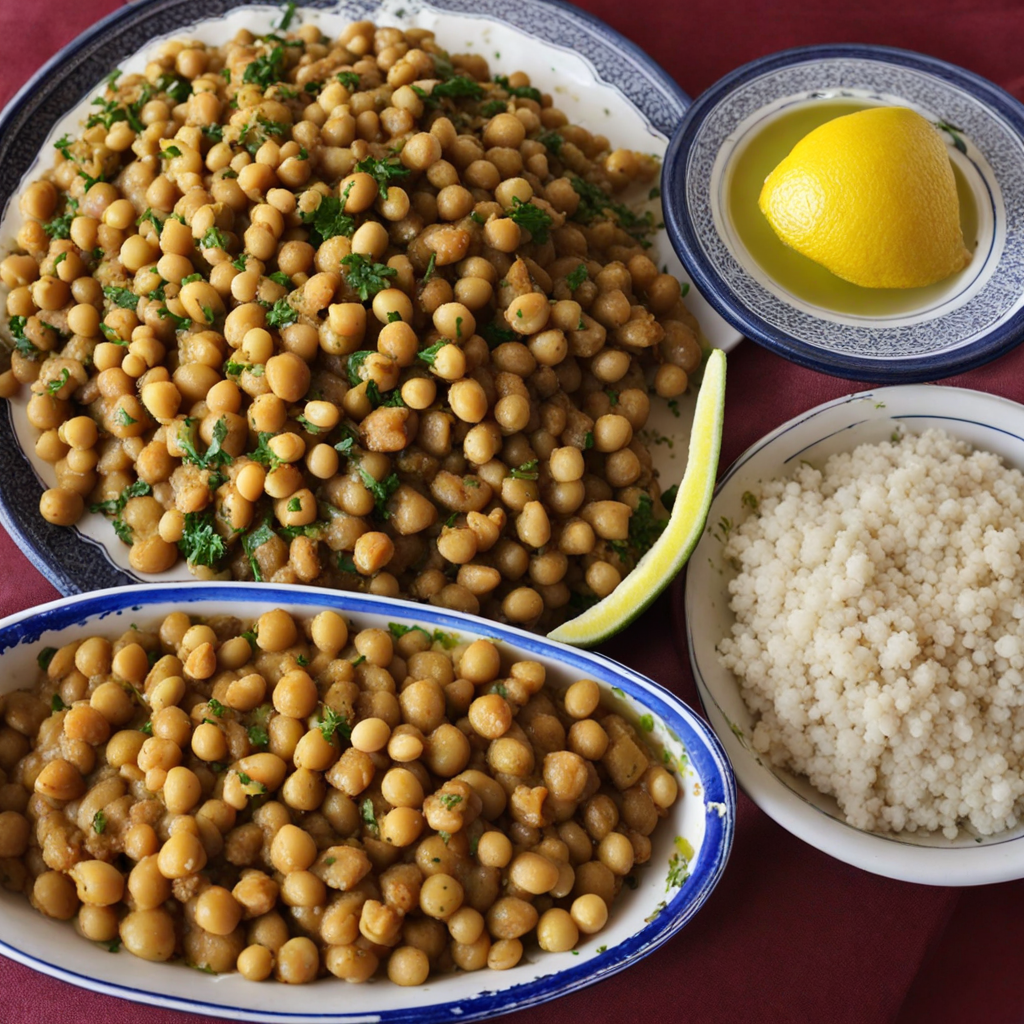Abreh
Abreh is a traditional Sudanese dish that showcases the rich culinary heritage of the region. It is primarily made from a blend of finely ground grains, often wheat or sorghum, which are mixed with water to form a dough-like consistency. The dough is then shaped into small balls and simmered in a flavorful broth, typically made from meat, vegetables, and a variety of spices. The result is a hearty meal that is both nourishing and satisfying, capturing the essence of Sudanese flavors in every bite.
The dish is often served with a spicy sauce, which adds a delightful kick and enhances the overall taste experience. The sauce is typically made from ingredients such as chili peppers, tomatoes, and garlic, creating a vibrant accompaniment that complements the mildness of the Abreh itself. As you delve into this dish, you’ll find that the interplay between the soft, chewy texture of the dough and the robust flavors of the broth and sauce creates a culinary adventure that is both unique and memorable.
How It Became This Dish
The History of Abrih: A Culinary Gem of Sudan #### Origins of Abrih Abrih, a savory dish from Sudan, epitomizes the rich tapestry of Sudanese cuisine, reflecting the country’s diverse cultural influences and agricultural abundance. The origins of Abrih can be traced back to the fertile lands of the Nile River Valley, where ancient civilizations thrived on agriculture. The primary ingredients of Abrih—rice, meat (often lamb or chicken), and an array of spices—are rooted in the agricultural practices of Sudan, which has been an epicenter of food production for millennia. The name "Abrih" is derived from the Arabic word for "to boil," which directly relates to the method of preparation. Traditionally, the dish involves boiling rice and then mixing it with sautéed meat and vegetables, creating a hearty meal that is both nutritious and flavorful. The dish’s preparation highlights the communal aspect of Sudanese culture, where food is often shared among family and friends, reinforcing social bonds. #### Cultural Significance In Sudan, food is much more than sustenance; it symbolizes hospitality, community, and identity. Abrih, like many traditional dishes, holds a special place in the hearts of the Sudanese people. It is often prepared during significant gatherings, such as weddings, religious celebrations, and family reunions. The communal aspect of eating Abrih fosters connections among people, serving as a reminder of their shared heritage and traditions. The preparation of Abrih is often a communal effort, with family members gathering to cook the dish together. This not only enhances the flavor of the food but also strengthens familial ties. It is common for mothers to pass down their recipes and cooking techniques to their daughters, ensuring that the culinary heritage is preserved through generations. The act of cooking Abrih becomes a rite of passage, where younger generations learn the intricacies of their cultural identity through food. #### Ingredients and Preparation At its core, Abrih is a dish that emphasizes simplicity and flavor. The primary ingredients include rice, meat (typically lamb or chicken), onions, garlic, and a blend of spices such as cumin, coriander, and black pepper. The choice of spices reflects the diverse influences on Sudanese cuisine, which has been shaped by trade routes and interactions with neighboring regions. The preparation of Abrih begins with marinating the meat in a mixture of spices, allowing the flavors to meld. The meat is then sautéed with onions and garlic until tender, creating a rich base for the dish. The rice is cooked separately, often flavored with saffron or turmeric, giving it a distinctive color and aroma. Once the meat and rice are cooked, they are combined and allowed to simmer together, allowing the flavors to infuse. While the traditional method remains prevalent, modern variations of Abrih have emerged, incorporating local ingredients such as vegetables like carrots and peas, which add nutritional value and color to the dish. These adaptations reflect the evolving nature of Sudanese cuisine, where traditional recipes are open to innovation. #### Evolution Over Time The evolution of Abrih mirrors the broader changes in Sudanese society and its culinary landscape. Historically, Sudan has been influenced by various cultures, including Arab, African, and Mediterranean, each leaving its mark on the local cuisine. As trade routes expanded, spices and techniques from distant lands found their way into Sudanese kitchens, enriching the flavor profiles of traditional dishes like Abrih. In the modern era, globalization and urbanization have transformed how Sudanese people experience food. The rise of fast food and convenience meals has led to a decline in traditional cooking practices among younger generations. However, there has been a resurgence of interest in traditional cuisine as people seek to reconnect with their cultural roots. This revival has sparked a renewed appreciation for dishes like Abrih, which are celebrated for their taste and cultural significance. Social media has played a pivotal role in this culinary renaissance. With platforms like Instagram and Facebook, home cooks and professional chefs alike share their recipes, cooking tips, and stories related to traditional dishes. This online presence has not only popularized Abrih but also fostered a sense of community among those who cherish Sudanese food culture, encouraging discussions about recipes and cooking techniques. #### Abrih in Contemporary Sudan Today, Abrih stands as a testament to Sudan’s culinary heritage. It is often featured in restaurants that focus on traditional Sudanese cuisine and is a staple in households across the country. The dish embodies the spirit of Sudan—a blend of resilience, community, and celebration. In urban areas, where the pace of life has accelerated, Abrih is still cherished as a comfort food, often prepared during gatherings and special occasions. Families continue to uphold the tradition of cooking Abrih together, passing down stories and memories associated with the dish. Moreover, the dish is increasingly being embraced by the Sudanese diaspora, who seek to recreate the flavors of home, using Abrih as a way to connect with their heritage and share it with others. #### Conclusion Abrih is more than just a dish; it is a symbol of Sudanese culture, history, and identity. Its origins are deeply rooted in the land and traditions of Sudan, while its evolution reflects the dynamic nature of culinary practices. As Sudan continues to navigate the complexities of modernity, dishes like Abrih serve as a bridge to the past, reminding individuals of the importance of community, family, and cultural heritage. In a world that is increasingly globalized, the preservation of traditional foods like Abrih is crucial for maintaining cultural identity. As Sudanese people around the world embrace their culinary heritage, Abrih remains a beloved dish that not only nourishes the body but also feeds the soul, celebrating the rich history and vibrant culture of Sudan.
You may like
Discover local flavors from Sudan







